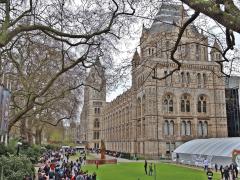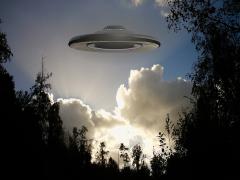
Investigating Unidentified Aerial Phenomena (UAP)
What are the common characteristics of UAP sightings?
UAP sightings exhibit a range of consistent characteristics that make them a unique and complex phenomenon to analyze. One of the most striking features is that these sightings are often registered across a variety of sensors, including radar, infrared, electro-optical, weapon seekers, and visual observation, which underscores the physical presence of these objects and their multifaceted nature . This multi-sensor detection capability is crucial for validating the sightings and reducing the likelihood of errors or misinterpretations. Furthermore, the majority of UAP sightings are reported by military personnel, particularly U.S. Navy and U.S. Air Force aviators and operators, which adds a layer of credibility and urgency to the reports. These sightings frequently occur near areas of national security importance, which raises concerns about potential threats to military installations or operations. Additionally, witnesses have described UAPs exhibiting extraordinary capabilities such as hovering over water disturbances and moving seamlessly between different environments, including space, the earth's atmosphere, and underwater. These observations suggest advanced propulsion systems and a level of technological sophistication that challenges our current understanding of physics. Collectively, these characteristics not only highlight the enigmatic nature of UAPs but also emphasize the need for focused scientific efforts to better characterize, understand, and attribute these phenomena.
How do technological advancements aid in the detection and analysis of UAP?
Technological advancements play a crucial role in the detection and analysis of UAPs, significantly enhancing our ability to categorize and understand these phenomena. The integration of advanced sensors specifically tailored for UAP detection facilitates more in-depth and accurate analysis, thereby improving the analytic fidelity of collected data [6]. For instance, the development of portable real-time UAP sensor technologies, such as the Gremlin, allows for rapid deployment to areas of national security significance where UAP incidents are frequently reported. This enhances the capacity for immediate data collection and analysis, enabling a more proactive approach to UAP investigation. Moreover, the diversity and expansion of private research efforts, supported by these technological advancements, are driving a new era of comprehensive UAP studies, bridging the gap between isolated sightings and systematic scientific inquiry. This collective push for more advanced studies is essential for achieving meaningful breakthroughs and addressing the current lack of sufficient information in the dataset to attribute UAP incidents to specific explanations. Consequently, these advancements are not only expanding the scope of UAP research but also refining the methods used to interpret and categorize UAP data, ensuring a more structured and informed approach to understanding aerial phenomena.
What are the potential explanations for UAP, both terrestrial and extraterrestrial?
The potential explanations for UAPs can be categorized into terrestrial and extraterrestrial origins, each with its own set of complexities and technological implications. On the terrestrial front, some researchers suggest that UAPs could be advanced but classified military aircraft, unconventional drones, or atmospheric phenomena that are not yet fully understood. These hypotheses are supported by the increasing number of projects aimed at investigating UAPs, as researchers take a more open-minded approach to the subject. From an extraterrestrial perspective, the question remains whether UAPs could be evidence of alien technologies; however, NASA has not found any credible evidence to support this claim. Despite the lack of definitive proof, the scientific community continues to scrutinize UAPs, driven by the curiosity to explore events that slightly transcend our current understanding. This scrutiny is exemplified by NASA's initiative to use improved technology and artificial intelligence to investigate these phenomena. As such, while the debate between terrestrial and extraterrestrial explanations persists, the consensus is that more data and advanced analytical tools are essential for making any definitive scientific conclusions. Hence, the ongoing efforts to study UAPs reflect both the allure of the unknown and the relentless human pursuit of knowledge.







